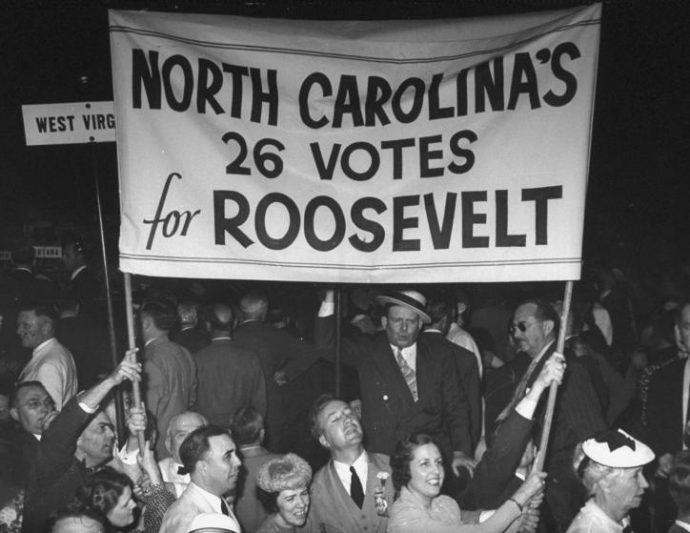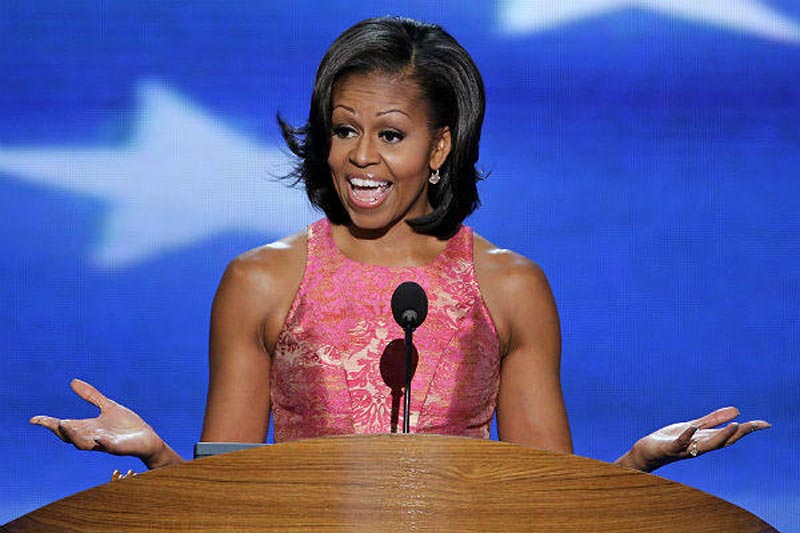July 18-21, 2016
The 2016 Republican National Convention will be held at the Quicken Loans Arena in Cleveland, Ohio.
July 25th-28th, 2016
The 2016 Democratic National Convention will be held at the Wells Fargo Center in Philadelphia.
As we near the two conventions for the parties to officially declare their presidential nominees, this political update is information for you on how the political conventions operate.
What is the Purpose of Party Conventions?
Political conventions are not part of the Constitution to elect a president. The founding fathers of American government actually viewed political parties with distrust or outright hostility. Today, we can hardly imagine a government without political parties, and the parties’ conventions are huge, televised media events.
Over time, the nominating function was taken away from the conventions. People wanted more control over their party’s nominees, so the presidential primaries and caucuses came into use. Party members vote in the primaries to choose who they want to represent their party in the upcoming election. By convention time, there is no suspense about who will be the nominee–it typically has been known for months. This is why nominees are referred to as the “presumptive” nominees before the election. They have met the number of votes necessary (2,383 for Democrats, 1,237 for Republicans) for the party nomination. The convention then becomes a formality to nominate, vote, and officially designate them on behalf of their party.
Political conventions serve other purposes beyond nominating the party candidate, which is why they’re still around. The convention offers party members a chance to gather together and discuss the party’s platform. We can expect a lot of discussion at both conventions with unhappiness expressed over super delegates, the role of delegates, and party rules. These issues will be discussed, and the party has the power to revise or change them at the convention after votes. The platform will be discussed–which is the party’s stance on the political issues of the day. The convention is the proper place for political debate over issues and to make changes.
- In 1860, the Democratic Party debated the government’s right to outlaw slavery. When the party adopted the position that the Supreme Court could decide the slavery issue, delegates from several southern states walked out, resulting in the Southern Democratic Party.
- In 1980, Senator Edward Kennedy fought against incumbent Jimmy Carter’s economic plan. Although Carter defeated Kennedy for the nomination, Kennedy’s debate forced Carter to change his plan radically.
Today, even this function of the convention has been largely eliminated. The conventions have been streamlined, with notable events and speeches scheduled for prime-time television hours. The parties work to eliminate any evidence of debate or disunity within the party, although this year has proved to be historically contentious. The political conventions have now been reduced to the status of infomercials, marketing the ideas and personalities of the party to the public.
While the conventions serve to unify the party and generate party pride, the “advertisement for the party” has become the primary function of political conventions today.
The Media Role at the Conventions
In the early 1800s, closed-door conventions were only briefly mentioned in newspapers. When the process became more open, media coverage became more widespread. The convention circus was hard to cover in newspapers … and then along came television. This new media thrust the chaotic conventions into homes across the country. Every floor debate, interruption, protest and delegate squabble was there for public viewing.
This led to the changes in what we see today–no more debates or arguments, no unplanned speeches or interruptions, and protesters are kept miles away from the convention floor. Now, the convention is a media event, attended by almost as many reporters as delegates, and broadcast in carefully selected prime-time viewing slots. Again, this is an unusual year for conventions, and it’s anyone’s guess how it will be played out on the convention floor.

How Are Convention Delegates Selected?
The national political conventions are made up of delegates from each state. Those delegates are selected in different ways, depending on the party and the state. The key here is that the delegates are not only party members; they are supporters of a particular candidate.
The Democrats use a proportional system, in which the percentage of party members for a candidate in the primary or caucus is reflected in the percentage of delegates representing that candidate who will be sent to the convention. For example, if two candidates split the primary vote, then each gets half of the delegate positions for that state.
Republicans favor a winner-take-all system, although they allow states the option of using a proportional system. Under a winner-take-all system, the candidate with the majority of votes in the primary or caucus gets all of the state’s delegate seats.
Deciding how many delegates each state gets is a very complicated process. Essentially, the number is based on the state’s population, as well as how much support that state has given to party candidates in recent elections.
What do today’s delegates do at the convention?
They may discuss party issues, listen to speeches, and participate in party “pep rallies.” There are pledged (to one candidate) and non-pledged delegates. If a nominee had not received the required majority of votes before the convention, there would have been a series of votes to choose the nominee. But for the most part, nothing political happens at political conventions in the 21st century. The convention concludes with a carefully planned speech by the party’s nominee for president.
Historic Conventions
- Perhaps the most infamous political convention was the 1968 Democratic National Convention and ensuing riots in Chicago, but there have been other significant events at conventions.
- In 1888, abolitionist and former slave Frederick Douglass became the first African-American to receive a vote at a political convention–a single vote at the Republican convention.
- In 1908, Democrats added legislation to their platform that would separate the interests of corporations from those of Republicans. They felt that corporations and the Republicans were too closely allied–a theme that remains relevant almost 100 years later.

In 1940, two unique events occurred at political conventions.
- First, Franklin D. Roosevelt was nominated for a third term as president. After some debate over his choice of vice president, he accepted.
- Second, the Republicans held the first ever televised convention that year.
The 2000 Democratic Convention in Los Angeles was marked by extensive protests in support of numerous causes.
- Pro-union, gay rights, anti-corporate welfare, pro-environmental and other movements made their voices heard a good distance from the convention site, due to the heavy presence of security fences and police officers. A performance by the politically active rock group Rage Against the Machine was interrupted by police, who used pepper spray and fired rubber bullets at fleeing spectators.
The more you know.
NOTE:
Feminine Collective offers general information on the election, voting processes, and issues on Election 2016. Feminine Collective does not endorse any candidate or political party. Our goal is to provide data to help you make informed decisions.
Sources: HowStuffWorks.com; ABCNews.com; CNN.com
First Lady Micelle Obama 2012 Democratic Convention Credit Marshalcomm.com
